|
Fire Related Particles
The smoke plume from an uncontrolled fire contains particles and gases as it
leaves the combustion zone. The gases include water vapor, carbon
dioxide, carbon monoxide, nitrogen oxides if the combustion zone is hot
enough, and volatile organic compounds. The volatile organic compounds begin
as gases but much of those materials will condense or sorb onto the
particles in the plume. Some will stay in the gaseous state. The particles
from combustion include charred and coked fuel, pyrolized associated
materials, and agglomerates of "soot" and condensed organic compounds. The
distribution of the materials associated with the plume at the receptor site
will depend on the size of the particles, their sticking coefficient
relative to the surface they contact, distance from the fire, and time of
transit from the combustion zone to the receptor. The particles from the
smoke plume leave a signature at the receptor site that can often be used to
determine the impact of the fire at that location. The signature at the
receptor site will change with time so sampling at the receptor site soon
after exposure is most desirable, though some evidence of exposure may
persist for years.
The materials covered here are related to uncontrolled fires and not
controlled combustion sources. Emissions from internal combustion and diesel
engins, boilers of all types, and smoking of tobacco or other plants are not
included here. Emissions from fireplaces, wildfires, house fires,
industrial fires, field burning, and yard waste fires are included.
Wildfires include forest fires and brush fires.
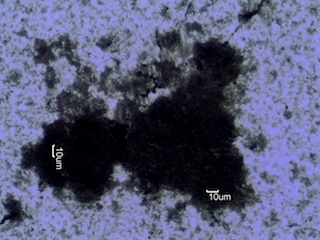
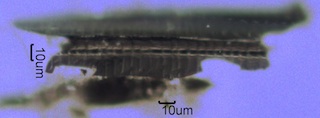
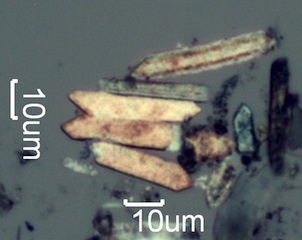
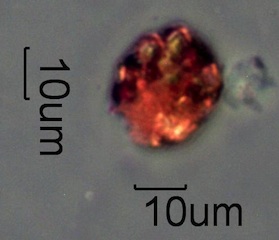
Fireplace Particles
Backdrafting in the fireplace or a leaking chimney will emit materials from
the fire in the fireplace into the living zone of the building.
Fireplace emissions are dominated by spalled coked wood cells and a relative
absence of other charred plant material. The intent of burning wood in
a fireplace is to consume all of the core of the wood. This is distinct from
wild fire that burns the outside of the plant and tends to leave the
charred core. Fireplace debris is defficient in pyrolized phytoliths and
burnt clay compared to forest fire smoke. Burning waste materials in
the fireplace will add to the complexity of the emissions but will not add
phytoliths or burnt clay.
House Fire Particles
House fire particles tend to be dominated by charred Douglas fir or Pine,
high hydrocarbon content soot agglomerates from burning plastics and
synthetic fibers, charred paint, and soot coated glass fiber. The
agglomerated soot tends to be absent in wild fires, fireplace emissions,
field burning, and the backyard burning of leaf and plant trimming.
Agglomerated Soot

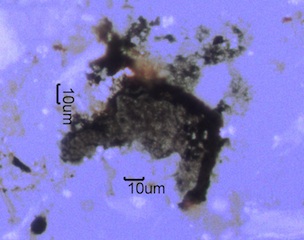

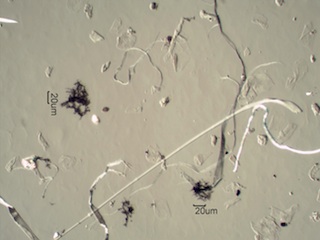
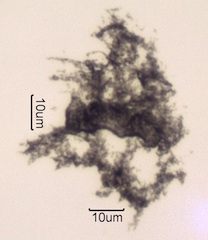
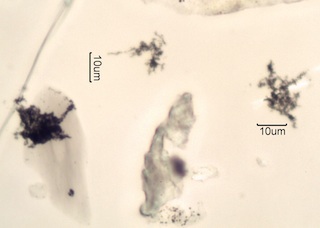
Charred Wood

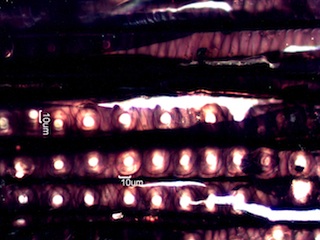
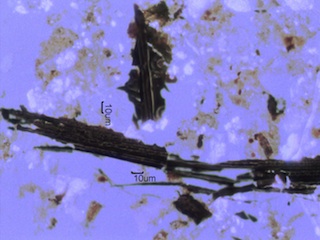
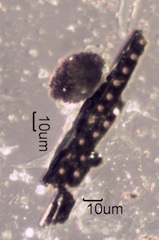
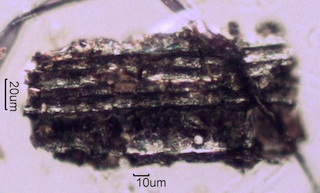
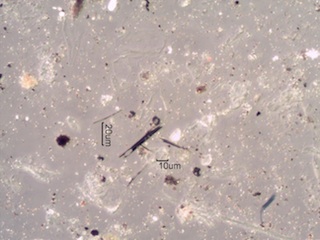
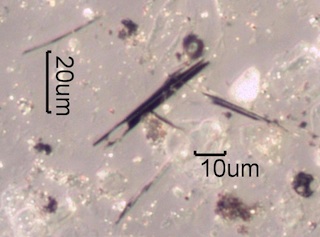
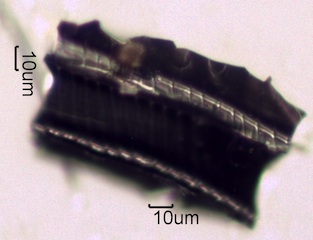
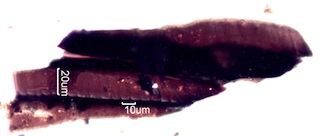
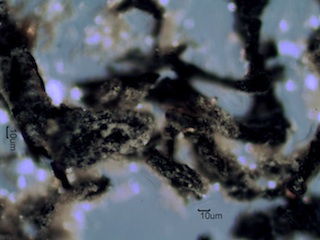

Burned Wire Insulation
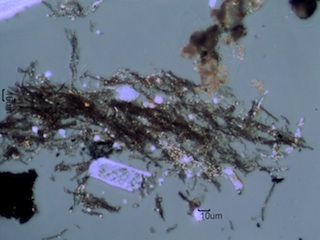
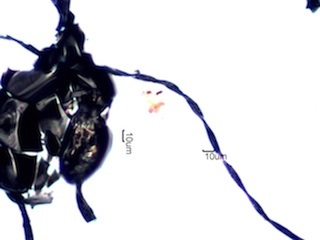
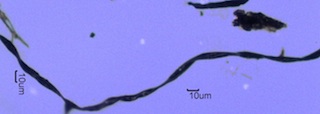

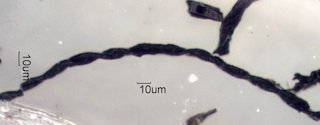
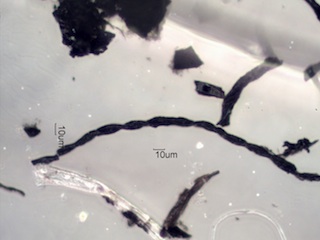
Thermally Modified Glass Fiber Thermal Insulation
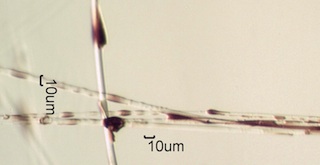
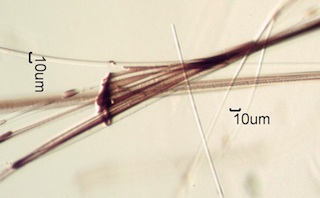

Industrial Fire Particles
Industrial fire particles tend to be characterized by the materials related
to the industry. Agglomerated soot particles tend to be very
common.
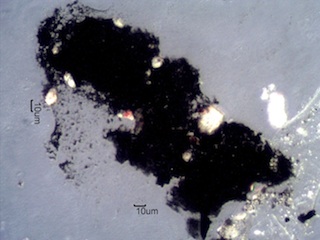
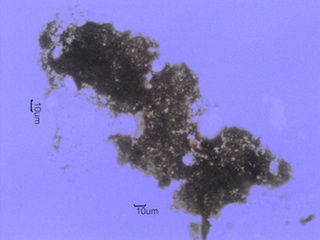
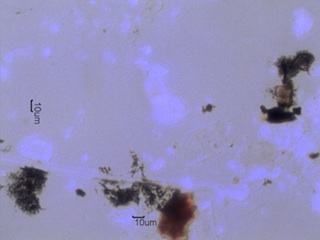
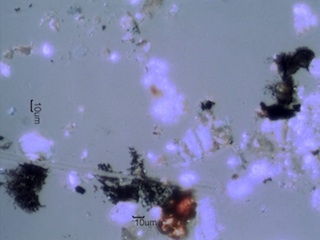
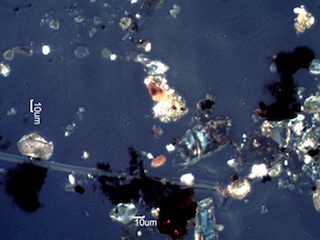
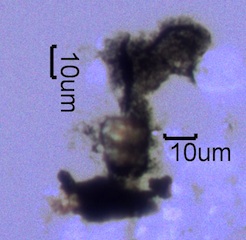

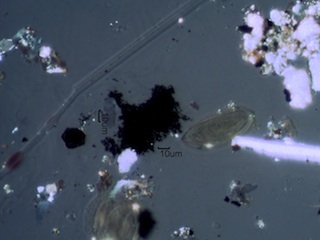
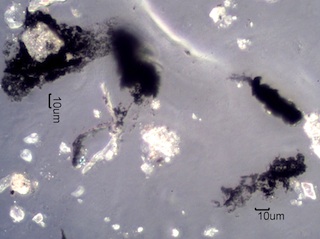
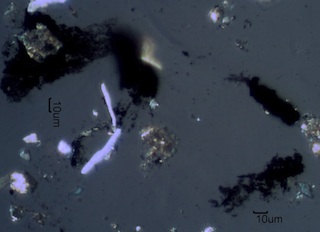
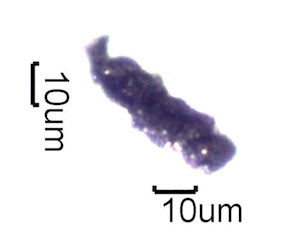

Wildfire Particles
Wildfires create strong winds and updrafts that carry large amounts of burnt
soil, charred bark, charred wood, charred leaves,
other charred plant material, pyrolized phytoliths, and other charred
biologicals in their plume. In forest fires and brush fires the plants burn
from the outside in rather than from the inside out, as in a fireplace. As a
result phytolith rich bark generally provides a strong source for
pyrolized phytoliths. The type and frequency of phytolith will depend on the
fuel at the location of the fire. Fire retardant aerosol particles
may also be present as part of the assemblage.
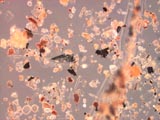

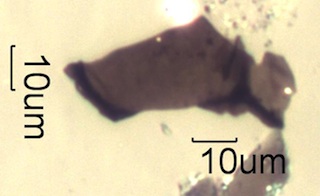

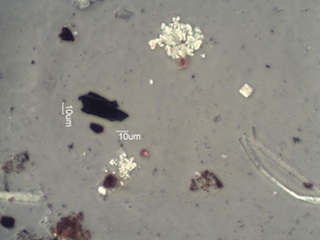
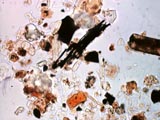
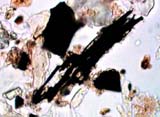
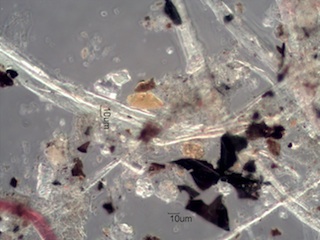

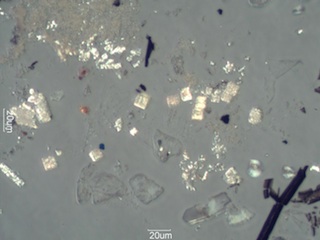
Charred Wood
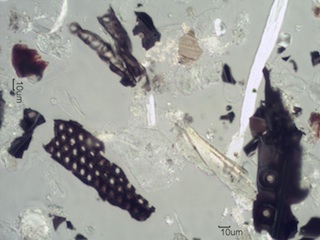
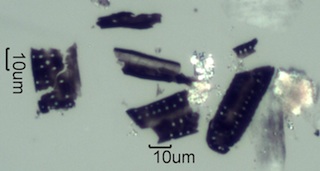
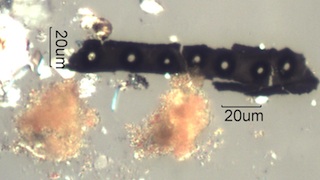
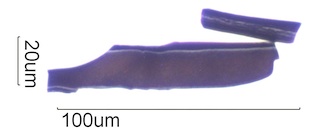
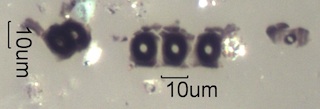
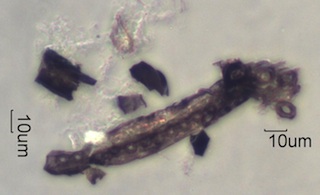

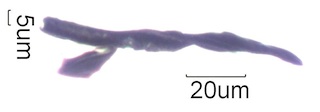
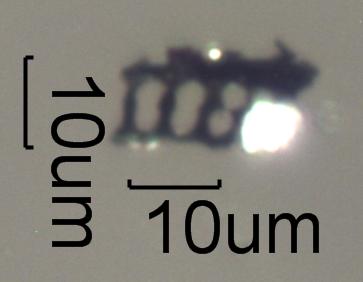
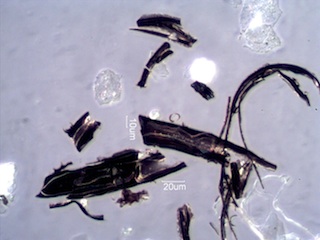
Pyrolized Calcium Oxalate Phytoliths
Pyrolized calcium oxalate phytoliths are a marker for forest fire smoke, or
any industrial, commercial, or other activity that involves the
burning of plant material containing a concentration of calcium oxalate
phytoliths. They have been used to identify homes impacted by wildfires,
businesses impacted by emissions of restaurants, towns impacted by slash
burns, Teepee burners, hog-fuel boilers, etc. The predictable chemical
changes that take place as a result of short exposure to high temperatures
often result in a particle with characteristic optical properties and a
shape reminiscent of the original phytolith.


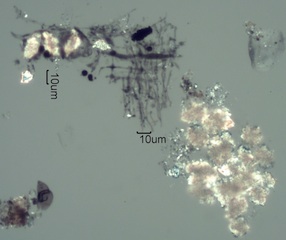
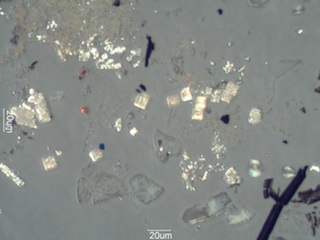

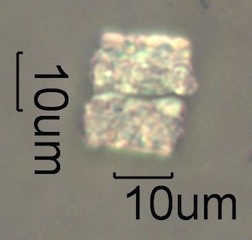
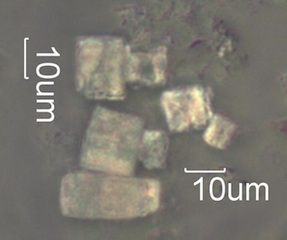
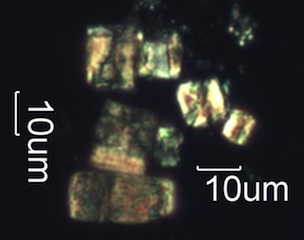
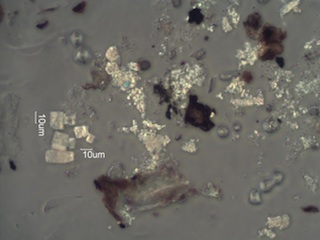
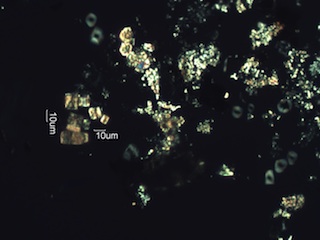

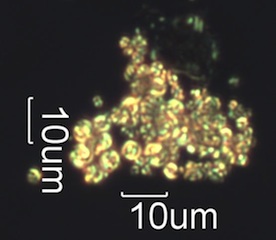
Pyrolized Silica Phytoliths
Pyrolized silica phytoliths may show little change other than the charred
cellulose debris still attached to the phytolith.
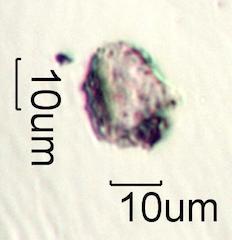
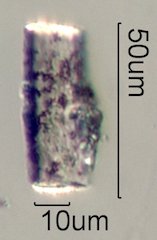
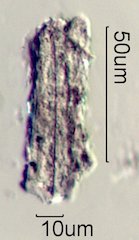
Burnt Clay
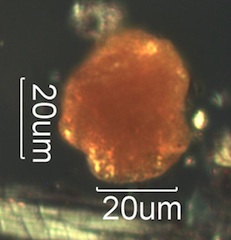
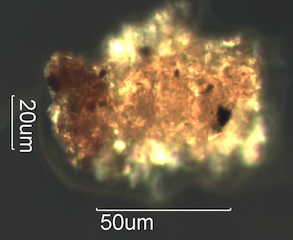

Burnt Plant Parts Other Than Wood or Phytoliths
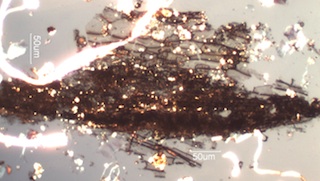
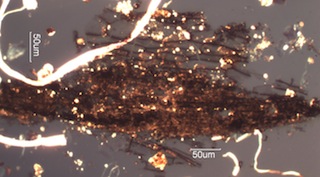

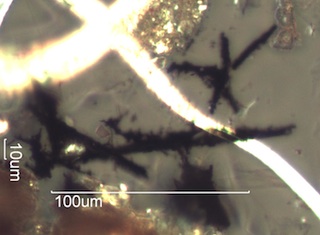
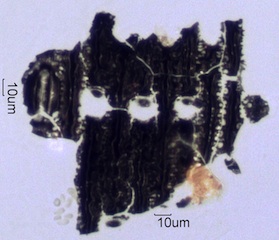

Fire Retardant Debris
Fire retardant spheres can generally be distinguished from red spray paint
spheres by the larger crystals and lower vehicle content of the
fire retardant. The vehicle content of most paints is about 20% but gel in
the fire retardant is about 5%. The mineral filler in spray paint
tends to be quite small while the crystals in fire retardant grow as the
water evaporates and tend to be much larger than the pigment (iron
oxide). Most of the fire retardant used for wildfires is pigmented with red
iron oxide (hematite) so other colors of spray paint won't
interfere.
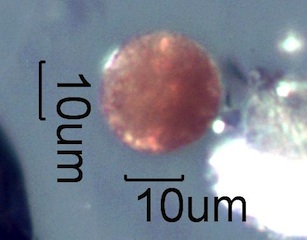
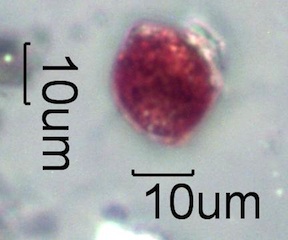

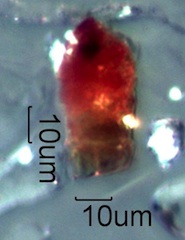
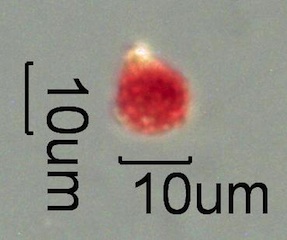
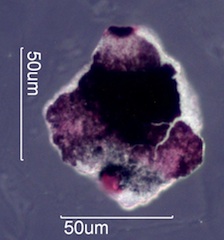

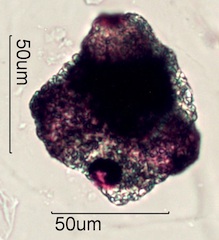
Particles Commonly Misidentified as "Char"
Many opaque or black particles are common in the environment and may be
misidentified as combustion products if reflected darkfield
illumination is not used along with transmitted polarized light. These are
just a few examples.
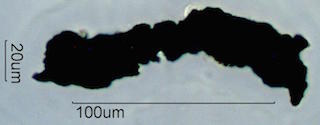
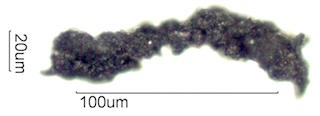
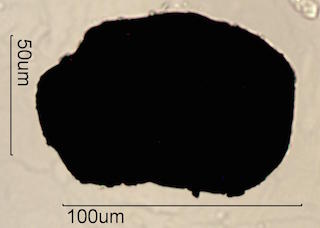

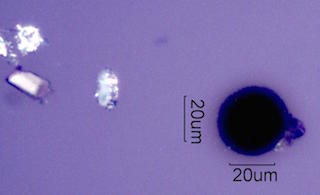
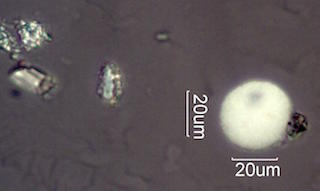
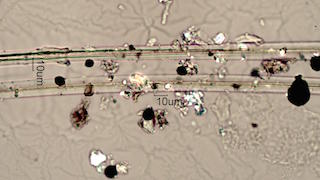
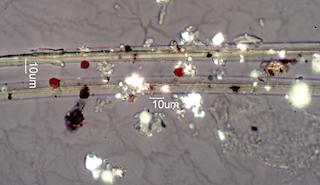
|